Updated: December 19, 2015
The autumn quest continues. Nothing but pain so far, really. A lone distro shone through the smog, but the rest are there coughing and sputtering and crawling through the miasma of erratic, unpredictable, heart-wrenching failure. Next on the menu, Fedora 23. Lo and behold, I will be testing the GNOME edition. W00t!
As you know, I've lost all interest in Gnome once the integer flipped from 2 to 3, as it marked a transition from efficiency and style to over-sized touch-hyped nonsense that continues to this day. But after Zorin's optimistic success, plus the monumental failure of Kubuntu and Netrunner, both with Plasma, I thought I might try to break the awful jinx cycle by doing something new and radical. And so we shall see what gives. Relevant links further below. After me ladies and gents!

Bootin' call
Not so trivial, I'm afraid. Fedora simply refuses to boot on my G50 laptop. In fact, all RH-based distros have a distinct dislike for this particular hardware. I was forced to dust off my six-year-old LG machine with its aging Nvidia card and try again. No problems here, but then, I was hoping for a more relevant, more modern platform as the testbed.
Good news, the Gnome desktop does not suck as much as it used to. There are some marked improvements in the look & feel of this desktop environment. Sharper fonts, better contrast, proper DPI, icons that are actually hi-res all over the place, more stylish and elegant menus, more easily accessible and intuitive functionality.
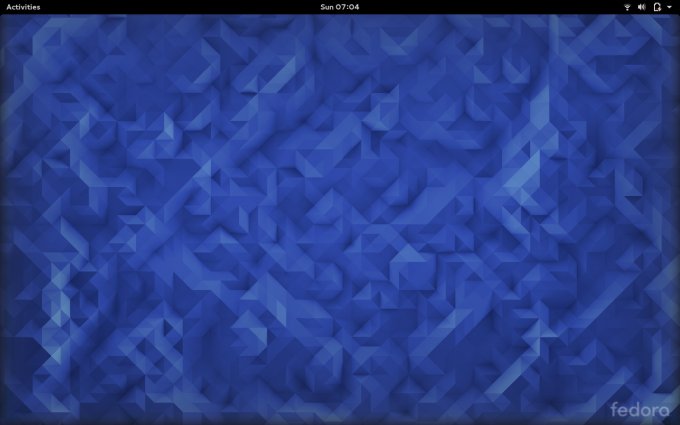


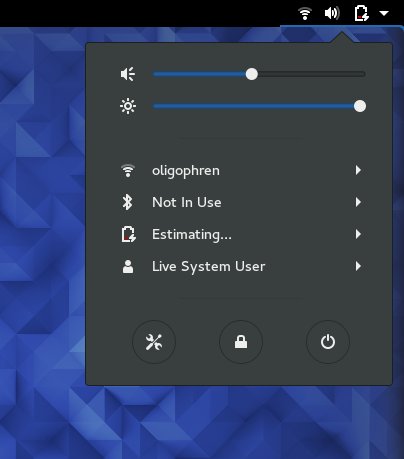
All that said, it is still quite silly, because trivial things like desktop actions, shortcuts, a menu bar of some kind, and minimize and maximize buttons, years after I've highlighted the issue in my original review, are still missing. Maddening that such trivial items ought to be left out from a complete desktop. You can't create a new file in Nautilus by default. We will handle this later on, but that's absolutely stupid. The file manager is pretty though.

Now, one more thing to remember during this review is - we cannot directly compare to how Fedora 22 behaved. It sucked majorly and then sort of got better, for a variety of reasons. All we can focus on is that this is the Workstation edition, the would-be desktop one aimed for home use by those in favor of blood, art and edges. If this little analogy is not clear enough, you are at a disadvantage then.
Anyhow, back to look & feel, you can't launch multiple instances of the same program, like for example Screenshot, and all the save, cancel and such command buttons are located at the top rather than the bottom of application windows. This is very confusing. Not how it's meant to be. Nopey nope.

Network connectivity
Surprisingly good, I must say. Wireless, fine. Samba sharing, quick and nimble, I go crazy when I hear a cymbal. Samba printing, it worked! The normally utterly useless Gnome printing utility finally gave a meaningful result. I did have to authenticate with the right Samba user, something that other tools and distros do not normally ask, but once this step was complete, I could actually add my HP printer.


Multimedia
HD video did work fine in the live session. I could not get MP3 files to play, naturally, but Rhythmbox is there, and it seems like it might end up doing some good things after all. We shall see later. In fact, it's time to install the distro, as Fedora is a rather boring distro before you add all the nonfree stuff. No browser codecs, either. Some, but none of the cool extras you want.

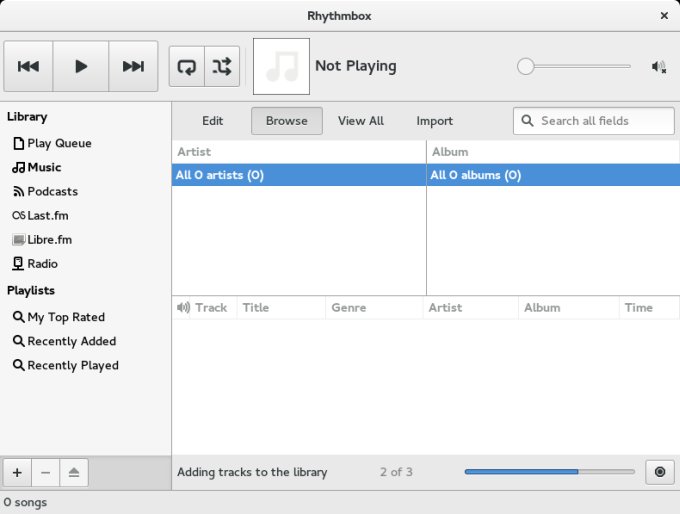

Installation
Alas, you still get the non-linear model. It looks as if it's here to stay. It won't get any smarter or prettier, so you might as well breeze through it with as little pain and fuss as reasonably possible. I dislodged the resident Scientific Linux and put Fedora in its place, into a dual-boot configuration with CentOS. It's a RedHat only laptop, but then if these distros would deign to boot on the Lenovo machine, things would be far more interesting.
The procedure completed without any problems. The slideshow is just a bunch of tiny banners, utterly boring. The progress meter always reads 100%, which seems to be a bug, and no one feels like fixing it. Anyhow, let's see what Fedora 23 can really do.



Fedora, Fedora, Fedora, Je t'en prie
Full, proper testing time. The installed session starts with a three-step welcome screen, which lets you configure your language, timezone and online accounts. A paradox, if you will. No music codecs, but no problems plugging you into half a dozen online services and their proprietary clouds. Meh. The languages change however you hover you mouse over the particular list entry. How about a click instead?


The desktop is almost fun to use. Now, I would not say I was enjoying myself, no more than I'd say using a file to shave yourself is a fun activity, but there's been some significant improvement in Gnome in the last couple of years. Well done.

Package management
Overall, it worked fine. Rather fast, plus the delta updates conserve bandwidth. But it can be tedious, as Fedora chose to pull no less than 927 packages from the servers. While fiddling about, I also spent some time pimping the distro into a semblance of order using both tips and tricks I laid out in the full guide and the specific subset of commands from the Fedora 22 review. Mine. Inception.
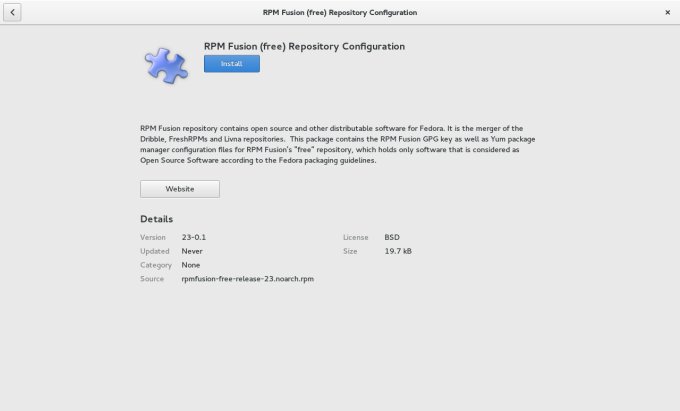


At some point, the GUI died, and later on, it turns out the culprit was SELinux.

Oh yes, SELinux sucketh
While trying to update my system, SELinux woke up and falsely labeled the package manager as a rogue. How lovely. Nothing but false positives and damage from these would-be hardening tools. Really, pointless.


Applications & tweaks
The default set is decent. Normally, Fedora gives you half a bag of misery, but it seems to have given up on being the most underwhelming and boring distro in the world. You do get Firefox, Evolution, the full LibreOffice suite, Rhythmbox, Cheese, Empathy, and several other tools. Quite handy.


My additions included the RPM Fusion repo, GIMP, VLC, Steam but not Skype, Google Chrome, and Gnome Tweak Tool so I could sort out of the desktop icons and window buttons thingie. Adobe Flash Player, too. There were no issues obtaining the software. It all worked smoothly. Oh wait! Steam does not like Nouveau, so you need a little tweak to get it all working. Nvidia drivers, you be asking? Further down.

The virtualization software Boxes also worked ever so slightly better than before. For starters, it has a normal icon. The customization of images is still woefully primitive, and my LG laptop does not have the virtualization extensions, so performance is quite bad, but it works. Maybe it could actually function well one day. The dark theme does not align well with the rest of the desktop.

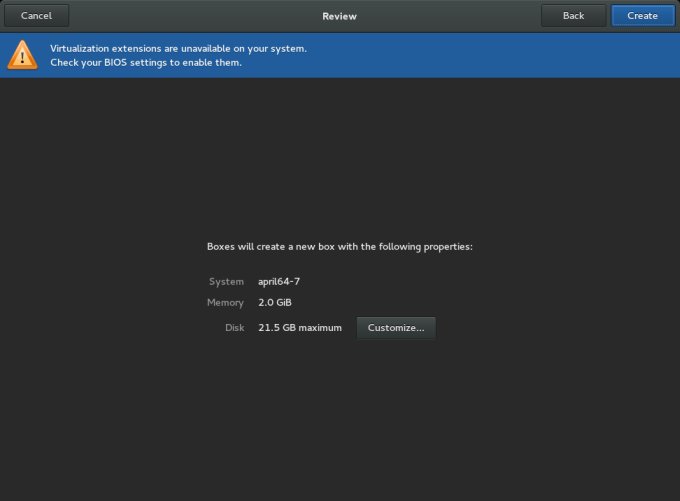
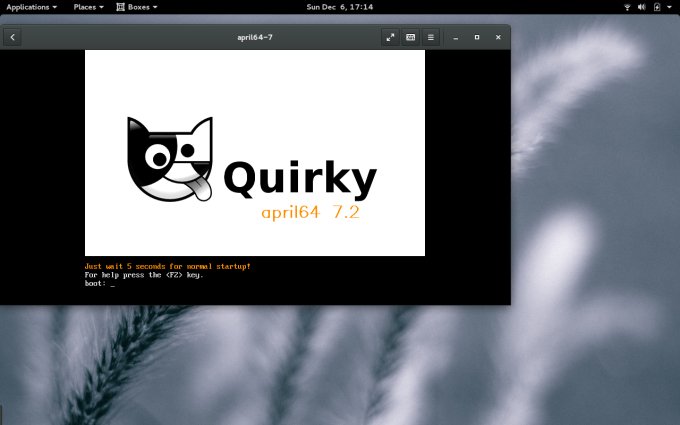
Smartphone support
Peachy, spotless, wunderbar. Really nice. Plasma sure is one step behind some other desktop environments in this regard. Doable, but then, pointless at the same time. Even Xfce outperforms it. Now, I was expecting and maybe even secretly hoping for the Gnome desktop to fail, but it did not. You get excellent, I repeat excellent connectivity for all them gadgets: iPhone, Lumia as well as Ubuntu Phone. Bob's your uncle.

The sidebar is purposefully of a different width here to mess up your OCD balance.


Multimedia support
Rhythmbox did not work well here, this time. It detected all the MP3 songs on the iPhone, but not the same songs inside the Music folder. It also didn't play any. First, the system could not find the right codecs, but after the RPM Fusion setup, it still struggled. I had to install VLC to enjoy music.


Hardware support, Bluetooth support
I decided to leave this one for a little later in the review. As it turns out, Bluetooth works. It's not the best, but it's quite decent. Some fault also ought to be blamed on the Ubuntu Phone, which only recently started offering proper support for this protocol. In the end, the whole thingie sort of worked. Not bad.


The rest of the hardware was properly initiated. Nothing was out of ordinary, nothing was flaking, and the support for a variety of peripheral devices was really quite good. No complaints on my end.
Stability, suspend & resume
Extremely stable, I must say. Given the fact Fedora is a permanent beta quality test bed, it was absolutely rock-solid stable. Sure, SELinux is annoying and ought to be removed with chlorine, bleach, napalm, and Greek fire, but it did not intrude much beyond the initial conflicts with the package manager. Suspend & resume also worked fine.
Just compare this with the autumn releases of Kubuntu and Netrunner. In fact, the third Plasma contender, openSUSE, was extremely stable, as it draws its magical powers and mana from the SLE pixie well, which illustrates that the problem is most likely not in the desktop framework but in the rushed, bad-QA job done by the dev teams. Or maybe. Who knows.
Performance, resource utilization
Remember, this is a very old laptop, with two pre-i-generation cores, 4GB RAM and an old Nvidia card. Testing before any updates were installed, the consumption was quite high, at about 1GB RAM. No swap was detected, which is alarming and stupid. Then after the updates, it went down to about 630MB. Nice. System CPU hovers around 10%. Yes, this is a relatively slow and somewhat sluggish machine, especially when you load the system with applications. It's not bad, and by no means unusable, but the age shows its toll.


Gnome 3 seems to be in line with the rest though, but it is difficult to comment on the actual responsiveness, as we're comparing two different sets of hardware. My feeling is that it is ever so slightly less snappy. Now, all these numbers come with the open-source Nouveau driver in place, so Nvidia ought to give us even better results. Let us.
Nvidia drivers
Nope. There are no official Nvidia drivers that support the latest Xorg version used in Fedora just yet. Sucks to be me, but I will have to wait, like all other Nvidia users. This should sort itself out in a few weeks, but for now, I don't have an update on how well this aspect works. Should be fine, though.
Battery life
Taking all of the above into consideration, 2 hours 20 minutes seems like a decent result for a battery pack that is six years old. In line with what the machine could do with similar distros when I first started using the system, so that's a good sign. And not that much worse than what the G50 offers with the autumn crop.

Customization, problems
The Gnome Tweak Tool sorted some of the woes. Then, I tried using the system settings menu to see what it can offer. In the past, it was dejectedly empty and useless, but now, finally, Gnome seems to offer an almost reasonable level of practicality. Almost. I am wondering about the privacy thingie, with the location services turned on. Why? Are we doing the smartphone nonsense again?





The one thing that totally annoys me is that you can't create files, only folders inside Nautilus. You can fix this by generating empty file types inside the Templates folder of your home directory, and then they will be reflected in the context menu. Why not just let users create empty text files? How difficult is this? The undo function is cool, though.
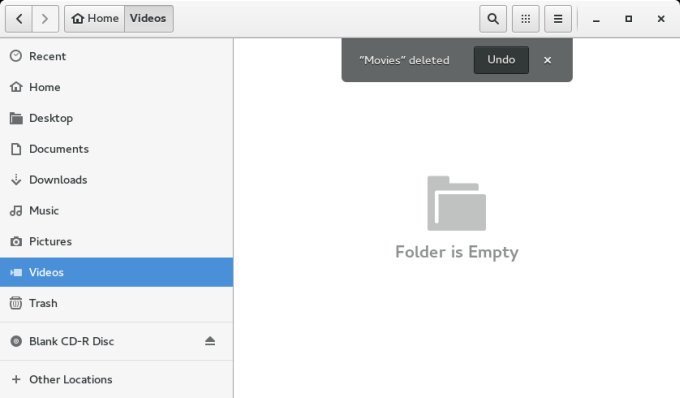


Final result
After some light tweakology:



Conclusion
Fedora 23 Workstation with the Gnome desktop is a very reasonable release. I am surprised first and foremost by the advancement in the Gnome framework. It's usable, and there's no reason to hate it anymore. This shows how objective and cool I am, and that my past resistance was all legit techno babble. When credits are due, I'm a bloody bank.
Indeed, self praise aside, Gnome has reached a point where it can be used. 'Tis a paradox, because it was perfect before being ruined, and now it's approaching the same level of usability it had years ago. But if we put the background story aside, yes, it's okay, and it makes sense on top of Fedora. The distro itself also works well. It's stable, robust, the hardware support is really good, all my peripherals were properly initialized, all the network protocols ate their bits and bytes without hiccups, and with some extra pimpage, you have a pleasant, friendly system that can serve entertainment as well as state-of-the-art functionality.
There's a lot more to be done. Easier access to codecs, extra software, better Nautilus support, better desktop usability without hacks, tweaks and special utilities. And yes, make the distro run on my Lenovo laptop. What's up with that. But given my experience this autumn, given my expectations, all considered, Fedora 23 is good. I am cautiously optimistic around Gnome 3, and maybe, just maybe, it could come back to the family and be nice and dandy once again. If you're looking for a refreshing change from the ordeal of pain we have been inflicted so far, you might want to give Fedora a spin. Grade: 8/10. Something like that.
Cheers.